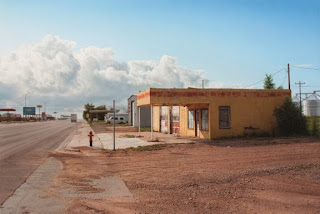{{{click on images to enlarge}}}
My dear friend from Rouen, France - Jeremy - gave me a book by Calvin Tompkins of his interviews with Marcel Duchamp, and I have enjoyed this book greatly! Yummy yummy yummy such food for thought in that book! Duchamp was amazing. Thanks for the gift before you left town, old buddy!
In a conversation with Calvin Tompkins, Marcel Duchamp once
said that he disliked what he called “retinal art.” To Duchamp retinal art was art that stopped
at the retina – it was pleasing to the eye and people did not have to mull over
the piece or become deeply affected by it.
This criticism could certainly be directed at ‘super-realism’ or ‘photo-realism,’
a trend in painting since the 1960s. Yet,
I feel that this criticism is misplaced and we clearly see why in the art
of Rod Penner. Penner’s work shows that ‘photo-realism’ penetrates the retina
readily and can engage the viewer as deeply as any type of conceptual art. When
Heinrich von Kleist (an amazing German writer) saw the paintings of Caspar
David Friedrich, he said he felt as if his eyelids had been torn off. Penner’s work is so meticulous, so throbbing
with realism that one could also say it is like getting your eyelids torn
off.
There are a couple types of themes running through Penner’s
paintings. Penner seems to seek out decrepit or neglected buildings in areas of
transition. By transition I mean
economic as well as literal physical areas of transition – along roads,
highways etc. It is almost a celebration
of entropy (the second law of thermodynamics).
Penner is catching a situation of disrepair at the point where the
person is, basically, helpless. Things are
running down, paint is peeling, stuff is falling off, and the owner can see
this, but he can’t do anything. A period
of wealth and abundance has now been followed by a period of deprivation and
all the owner of the building can do is wait, and hope. Penner also seems to enjoy painting buildings in which the owners are still taking care of the buildings, but these buildings are surrounded by, literally, nothing.
Therefore, the most amusing of Penner’s paintings is the
one (way down below) in which he has a building whose wall is painted to resemble the flag of
Texas. You can imagine the pride,
patriotism and financial excess that lead to the initial painting but it is surrounded by empty
lots, unpaved roads and failed businesses. Actually, it seems rather obvious that Penner is
capturing an aspect of America’s current financial woes which reflect the sorry
state of the American economy much more vividly than any of the statistics or
articles.
My favorite of his paintings is of a gas station in the
middle of nowhere as the sun is setting. The owner of this
station even has the lights on above his pumps inviting any happenstance
traveler to drop in and fill-up. The
problem is, there are no happenstance travelers anymore. The merchant is willing but the consumer is
weak.
So Penner helps dispel the myth that photo-realism is
empty. The first thing a painting has to
do is seize you, somehow, to look at it.
The magnetic nature of photo-realistic paintings draws you in and
engages you. You have seen these
structures before – all over the place.
But perhaps you have never really looked at them or never really seen
the significance. Penner’s work clearly invites
you to finally stop and see the significance in things you have previously
missed.









No comments:
Post a Comment
Note: Only a member of this blog may post a comment.